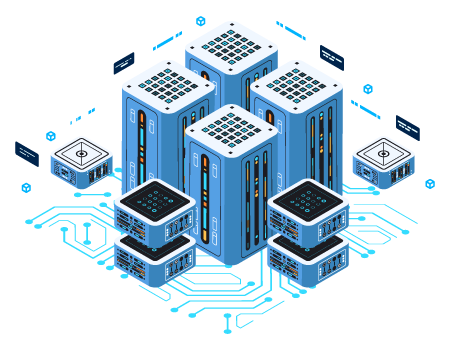
Speed
320 MB/s

Capacity
32 TB RAW

One Gen Backward
Compatibility
LTO tape continues to serve a role in the age of cloud. It offers the lowest cost of storage making it a must have “copy” for short term backups and long term archives.

Top reasons to consider LTO tape
Lowest Cost of Storage
LTO tape continues to offer the lowest cost of storage with future trends pointing to increasing densities at lower costs. This makes LTO a key part of any hybrid data strategy.
Cloud Insurance
Cloud vendors have considerable egress charges. With the low cost of tape storage, an on-premise tape copy can act as an insurance against future cloud egress costs.
Disaster Protection
Low maintenance costs and tapre resilience makes it a viable offsite copy against site wide data loss from natural disasters (fire, flood, earthquakes) or human errors.
Air Gap Vault
Write once protection and its natural ability to be air gapped makes LTO a natural selection for protection against increasing malware and ransomware attacks.
Why LTFS
LTFS is an open format for storing data on tape. Using a data management vendor that uses a non-LTFS, proprietary or closed format should be avoided for the future accessibility of any data.

StorageDNA: Open Data, Open Metadata
100% Open Data
The LTFS format is used for all data mirrored to tape. Further, all data written to LTO tape is mirrored (directory structures and file names) from the source file-system to the tape.
100% Open Metadata
In addition to open data, all metadata is preserved in an open XML format. This allows future access to metadata without the need of any proprietary software.

Folder Level
Select multiple folders for backup and archive
NAS/SAN Workspace
Works with multiple workspaces across one or more SAN/ NAS stores
Avid/Adobe Project
Archive Avid and Adobe projects with media and project parsing
AAF Based
Archive AAF based sequences and bins exportable from any application

Conform
A unique conform engine allows media across multiple LTO tapes to be conformed via an ALE. This allows faster, selective retrieves.
Partial Restore
For long form content, a partial retrieve engine enables sub-clip retrieval for MXF and MOV wrapped content.
FAQ
What is LTO tape media?
LTO or Linear Tape Open is an open standards digital tape technology led by a consortium comprising of HP, IBM, Quantum. You can learn more here.
What is LTFS?
LTFS or Linear Tape File System is an open file-system format for LTO tape. It was developed by IBM but is available as a free format from every tape drive and library manufacturer. You can learn more here.
What is the latest generation of LTO tape and what are its specifications?
LTO generation 9 has been announced and will be available Q1 2021. It is available in an 18TB raw capacity and supports speeds of 400 MB/s. Z
How many generations of backward compatibility does LTO-9 have?
LTO-9 will support read and write access to LTO-8 tape media. There will be no read or write support for tape formats older than LTO-8.
What is “air-gap” protection and how does LTO tape provide that?
- Air gap protection refers to the physical protection enabled by on-the-shelf media like LTO tape. It provides a level of physical distance as it can be kept disconnected from the digital world whereby malware, virus, ransomware cannot alter and harm data.
- While LTO tape does enable this air gap protection, it is important to ensure that data written to tape has not already been affected by malicious software. Further, while disconnected, on-the-shelf LTO does protect from malware, it is prone to numerous other physical attacks and digital attacks. Hence, having multiple copies of your data on a multitude of storage pools is the only way to ensure data is truly protected.
What data and metadata format does DNAfabric use to write to tape?
- All data is written to LTO tape in the LTFS open format. Files names and directory structures are preserved exactly.
- All metadata extracted is stored on disk in an open XML format. This allows future access in an open manner without the need for any proprietary software.
Does DNAfabric support folder, workspace and Avid/Adobe project-based archiving to LTO?
DNAfabric supports multiple forms of archiving to tape including:
- Folder based where multiple folders can be archived to tape. Folders can be incrementally and automatically scanned for new updates.
- Workspace based where one or more entire volumes on a NAS/SAN storage system can be scanned and archived/backed up to LTO tape.
- Avid/Adobe/AAF based where Avid bins, Adobe projects and AAF can be parsed and archived to LTO tape. Further, changing projects can be incrementally backed up where only updates are backed up.
How does DNAfabric enable conform from tape?
- DNAfabric auto-recognizes numerous camera formats and extracts metadata. This metadata is stored in a searchable XML file-system. This metadata can be used to perform more efficient conform restores from tape.
- To perform a conform, a user can submit an ALE of a bin or sequence. DNAfabric can perform a look-up and do a restore of just the media files needed in the ALE. This allows for lo-res to hi-res conforms where a user can submit an ALE of a lo-res sequence and retrieve the hi-res.













